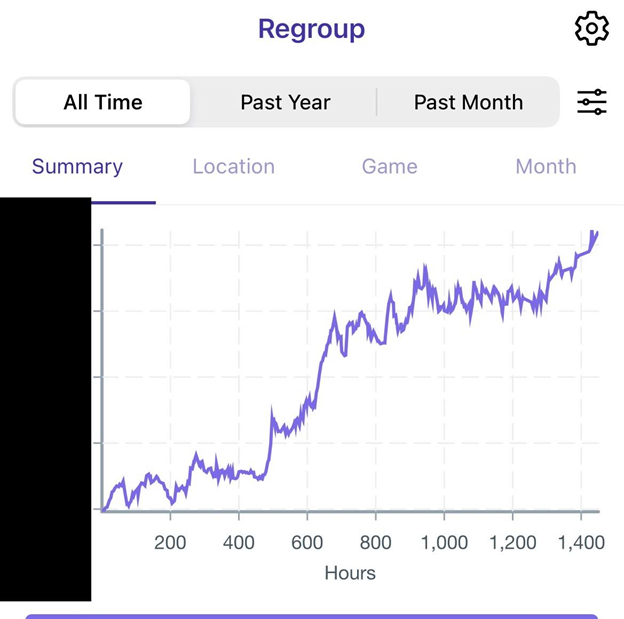Coaching has been an integral part of my personal growth over the past few years.
It took me a while to figure out boundary-setting and self-awareness in my early 20s.
In my mid-to-late 20s, business-school and entrepreneurship helped increase my emotional maturity.
Now let me explain how I got into coaching, and how it can potentially help you.
First time receiving coaching
Right before starting MIT Sloan, I did a 360-degree review. In September 2016, I went over the results with a counselor named Jo.
Jo didn’t provide me with any answers. But rather, he asked me a lot of guiding questions. By responding to his questions, I was able to figure out the answers on my own. My learnings became more deeply ingrained.
That was my first experience receiving coaching. It was extremely helpful!
Fast forward to summer 2017, I had just started my previous company.
An aspiring new coach named Laura Castaing swung by our coworking space. She was seeking start-up founders as clients. I fit the bill, and I now had some exposure to coaching, so I gave Laura a shot.
And so a 4-year coaching relationship began.
What is coaching?
Once a month, I would chat with Laura on the phone for an hour.
Each conversation would start with her asking:
“What’s on your mind?”
And then I would talk nonstop for 15 minutes.
Having a silent, but attentive audience of 1 at the beginning of each call was a forcing function. It forced me to focus and refine my own thinking in a uniquely powerful way. For once, I had a safe space to be vulnerable and explore my mental state.
That was 80% of the value that I found from coaching – having someone listen to me reflect aloud, uninterrupted for an otherwise socially unacceptable length of time.
Another 10-15% of the value came from the guiding questions that Laura would ask.
“What else?”
“What’s the challenge here?”
“What does an ideal outcome look like?”
Her questions were very open ended. And it further prompted me to think in ways that I couldn’t alone.
In general, I did 90% of the talking.
We spent a lot of time talking about the start-up I was running. But our conversations weren’t limited to professional topics. We talked about school, parents, girls—anything that was important to me, whatever was on my mind.
It felt therapeutic. And I saw coaching as a more lightweight, approachable alternative or complement to therapy.
New coach
After 4 years of working with Laura, we both outgrew each other. In Spring 2021, I switched to a new coach, Casey Rosengren.
Casey’s style was different. He helped me be more in touch with my feelings.
As an example, he showed me mind-body (somatic) exercises, i.e. guided meditation.
When I brought up a certain fear or anxiety – he would ask me to pinpoint where in my body I felt that.
Stomach, neck, head?
He would ask me to describe the feeling in detail.
Burning, tight, heavy?
I was incredulous at first. But I gave it a shot, and to my pleasant surprise it seemed to work.
Here is the rationale: Paradoxically, the way to overcome uncomfortable emotions is not to suppress or resist them, but to actually pay closer attention to them – welcome them, accept them, and learn to let them be.
Soon, I realized that I was reaching an inflection point.
For example, in 4 years of working with Laura, I can’t recall shedding a single tear. But I think I’ve cried at least 2-3 times working with Casey. I felt cathartic. It was incredible.
And overall, Summer 2021 felt like a breakthrough.
I can’t give Casey all the credit. Four years of working with Laura helped me get to where I was. And in general, many changes were happening in my life last summer.
For many reasons, the timing was ripe for my personal growth.
Exploring a start-up idea in the coaching space
Last summer, I taught personal growth through On Deck. That was enjoyable, and I received some great feedback.
At the time, I was bouncing around start-up ideas. And I knew coaching had been an integral part of my growth.
Why not build my next start up in the coaching & personal growth space?
So I decided to dive deeper.
4+ years of coaching from Laura and now Casey had shown me 2 styles of coaching. There are countless other styles, and I knew that I needed to expand my perspective to learn more.
In September 2021, I reached out to people in my network and offered free coaching. Several individuals took me up on it.
To prepare, I did some research. I used what I learned through Casey and Laura. I started developing my own style, and I got better through practice.
Soon I saw some positive signals.
I wasn’t charging, but my clients were busy professionals. They were paying with their valuable time, and they kept coming back.
And from the coaching conversations, I could tell that I was delivering real value.
A common piece of feedback was: “I’ve never felt listened to like that before”.
Each time I heard that, my heart leapt. My eyes got a little watery. I had been in their shoes before. I knew their pain. I felt the same sentiment when I first began to receive coaching back in 2017.
Bingo. Validation. I had proven that I could effectively coach others personally. Let’s call that Step #1.
Now I needed to figure out Step #2 – how to scale this business.
Coming up with a scalable business model
From the beginning, my goal was to build a company that extends beyond myself.
What I was doing – coaching people 1-on-1—was not a scalable business model. I knew that I had to take myself out of the equation.
Early on in my coaching experience, I had the powerful realization that not only I was helping others, but I was also improving my own emotional intelligence and communication abilities.
Close friends at dinner.
Strangers at parties.
Women on dates.
Remarkably, every conversation with every person became deeper. I could connect with people in more meaningful ways than ever. I felt like I had gained a superpower! 🙂
The fact that by helping others I was able to help myself led me to explore peer-to-peer 1-on-1 conversations as the core business model.
And this model was scalable. I would build a community. I would provide the structure, training, feedback systems to enable community members to help each other and help themselves in the process.
I would charge a membership fee – just like a gym.
Hence, Listening Gym was born. The investment would be a fraction of the cost of professional 1-on-1 coaching; plus, you get to learn and practice powerful, coaching-style communication skills.
I pitched the idea to my free clients, and I managed to convert several of them into paid Listening Gym members.
Journey ahead
Listening Gym is very much in the experimental stage. Our goal is to make the benefits of coaching more accessible. We provide deep, meaningful conversations about what matters most to you.
We help you build your emotional intelligence, and we help you communicate better–starting with yourself.
There are a lot of unknowns ahead. Just like I tell everyone I personally coach, I don’t know the answers.
For now, I’m a solo founder, with no employees and no outside funding. It gets lonely at times. But I do plan to share my progress, my hopes, and my fears here.
Join me on this journey by signing up for my private monthly newsletter. The vast majority of my future posts will be about Listening Gym, personal growth, and coaching.
Once in a while I will also write about 17th century history, Tiger King, stock investing, and more!



